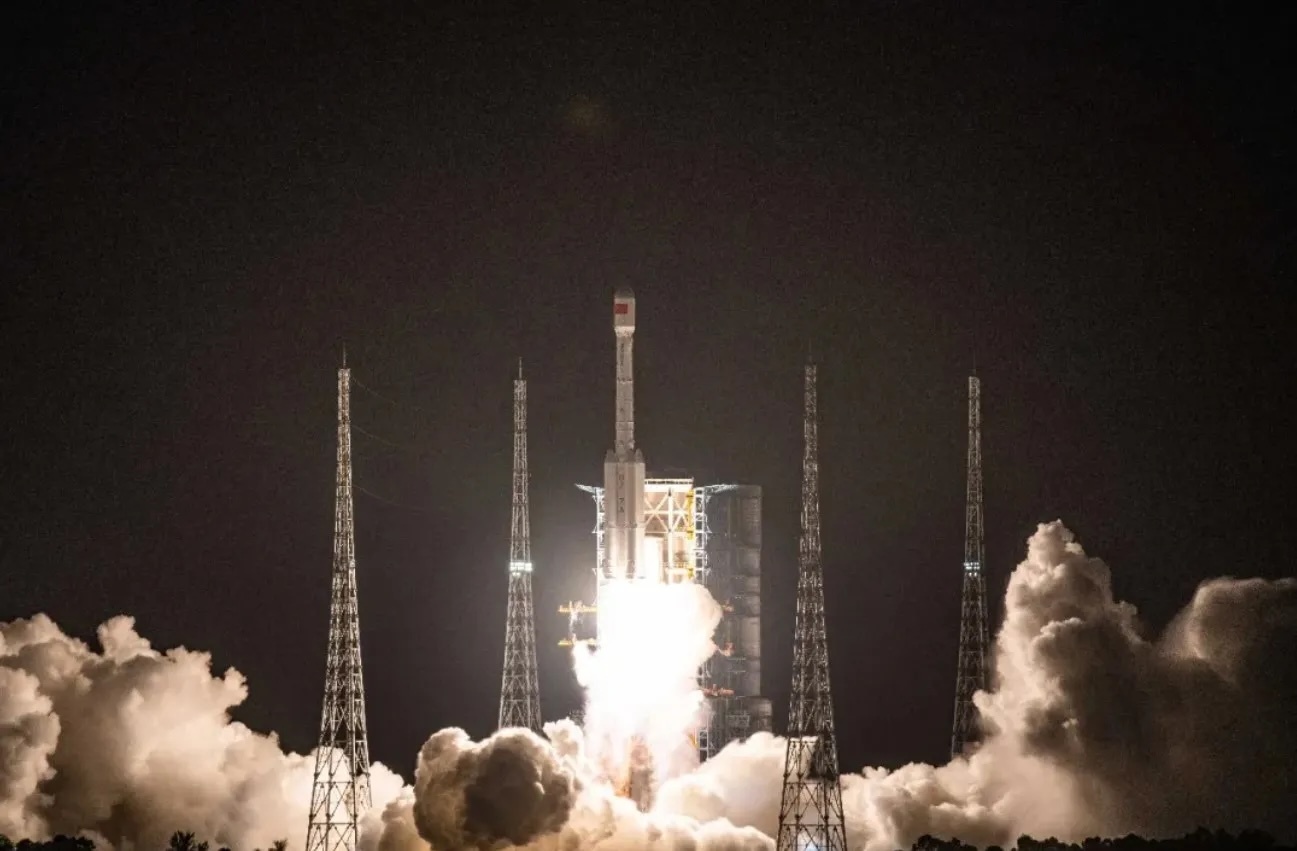23.08.2024

CZ7A-chinasat4a-22aug2024-OS-1
HELSINKI — China launched a new communications satellite towards the geostationary belt Thursday, but revealed very little information about the spacecraft.
A Long March 7A lifted off from Wenchang Satellite Launch Center on Hainan island at 8:25 a.m. Eastern (1225 UTC) Aug. 22, rising into night skies above the coastal spaceport. State media Xinhua announced launch success around 45 minutes after liftoff.
“The satellite successfully entered the predetermined orbit and the launch mission was a complete success,” the terse news release stated.
While the launch was expected, due to images of the rocket at Wenchang posted on Chinese social media and maritime navigation warnings, the payload was unknown to the outside until launch success was announced.
Xinhua stated that the ChinaSat 4A satellite can “provide users with voice, data, radio and television transmission services.” The intended users were not specified.
The China Aerospace Science and Technology Corporation (CASC), the country’s state-owned main space contractor, revealed shortly after that ChinaSat-4A was developed by its China Academy of Space Technology (CAST). No other details were published.
ChinaSat (or Zhongxing) satellites are generally described as commercial or civilian assets. However some of them might have military or intelligence applications, such as secure communications for the People’s Liberation Army (PLA). The lack of basic information on, and images of, the satellite suggests it may have military customers.
By contrast, ChinaSat-6E, launched by a Long March 3B in November 2023, was described more fully, including satellite bus and frequency bands.
The launch was the eighth flight of the Long March 7A. The 7A variant is a three-stage version of the standard Long March 7 used to launch cargo missions to the Tiangong space station in low Earth orbit.
The 7A is a 60.1-meter-long, 3.35-meter-diameter kerosene and liquid oxygen launch vehicle with four side boosters. Its first stage and boosters are powered by YF-100 engines. The launcher is capable of delivering up to 7 metric tons of payload to GTO. It features a fairing diameter of 4.2 meters.
The first launch, in 2020, ended in failure. The launcher has been seen as a long-term replacement to the workhorse, hypergolic Long March 3B for launches to GEO. However, the rocket has yet to launch more than twice in a calendar year.
China launch plans
Meanwhile at Wenchang, preparations for the first launch of the new Long March 12 are underway. Images initially shared on Chinese social media show a Long March 12 in the background while the Long March 7A for Thursday’s launch was being transferred to the pad.
The new rocket is reported to have a payload capacity of 12,000 kilograms to low Earth orbit (LEO). It uses upgraded versions of the YF-100 engines used by the Long March 7A.
The launch was China’s 37th of 2024. CASC set out plans in February to launch around 70 timesacross the year. It added that the country’s commercial launch providers were targeting roughly 30 launches in 2024.
The previous launch saw nine experimental Yaogan-43 series satellites sent into low Earth orbit. Major upcoming missions include the Tianzhou-8 cargo mission to the Tiangong space station followed by the Shenzhou-19 crew spacecraft around November.
The ChinaSat-4A launch is a continuation of China building its space infrastructure, including civilian, military and commercial constellations for communications and remote sensing.
Quelle: SN
